Church of the Mason
Overview
Location:
The Church of the Mason is the predominant religion in the Kingdom of Ardechia and Vishigrad. It is a Humans faith rooted in the northern region of Arboria. This belief system emerged as an offshoot of The Divine FlameGospel:
The Church of the Mason, also referred to as the Masonite Cult, centers on Humanity's ultimate self-sufficiency and rise to greatness through innovation and industrialization. It preaches that magic is a vile, corrupt force bestowed by the so-called "trickster gods" who offer it as a false promise, only to revoke it during moments of dire need. To the Masonites, magic is a gift with an unacceptable price, a temptation that places lives at the mercy of unreliable powers. They reject this dependency, pointing to the Elves whi in the previous world relied on magic and were ultimately betrayed in their hour of need.Symbolism:
The fire and hammer are the sacred symbols of the Church of the Mason. Fire represents light, warmth, and the tool for purifying the unclean. The hammer symbolizes the tool with which the Mason shapes the world and the weapon he wields to smite his enemies.Deity:
"The Mason" is the belief's deified prophet, an early preacher during The Great Migrations who rallied desperate masses in a tragic and bloody push deeper into Elven lands. Driven by an ingrained hatred of Elves and their reliance on Arcane magic, The Mason led his people to salvation through the advanced crafts of the forge. It is said his skill, technique, and craftsmanship rivaled those of Elves and Dwarves, despite their reliance on magical enchantments and runes. The Mason's unmatched creations were believed to be shaped by pure piety, serving as proof that the Arcane was unnecessary. The Mason's three students, who fervently followed his teachings, would later be declared Saints by the established church. After arming his people and driving the enemy from the lands they claimed as their own, The Mason used fire and hammer to cleanse the realm of any Elven remnants, building a new Human civilization upon the ashes of the old. Upon The Mason's death, he was proclaimed Divine, and his true name was intentionally forgotten so that people would follow his ideals rather than idolize the man himself. Over time, even his name faded entirely from memory.Saints:
Saint Elder
Saint Elder was The Mason's first student. Some believe he may have been The Mason's own son, though there is no evidence to confirm this. Saint Elder was a wise and thoughtful preacher, known for his ability to captivate crowds and provide well-reasoned answers to critics. His skill in debate allowed him to convert even the most stubborn traditionalists. As The Mason's right hand, he was often sent on missionary missions throughout the realm. Saint Elder represents piety.Saint Smith
Saint Smith was The Mason's second student and spent much of his time by his mentor's side in the forge. His faith burned as brightly as The Mason's, and his craftsmanship was nearly unparalleled, surpassed only by The Mason himself. Saint Smith was renowned for his efficiency and for producing gear of remarkable quality. Saint Smith represents skill.Saint Erec
Saint Erec was the last of The Mason's students, earning his favor much later than the others. Though he lacked charisma and was not highly skilled in the forge, he possessed a brilliant mind and became a master architect. Saint Erec personally oversaw the construction of many early Masonite chapels, introducing architectural innovations such as pillars and arches that combined practicality with aesthetic beauty. His creations were wonders to the common folk and inspired many. Saint Erec represents ingenuity.Traditions & Practices:
Ascendancy Day
Ascendancy Day commemorates the ascension of The Mason to divinity. Celebrated on the 28th day of the Month of the Sun, this day exempts all from their duties so they may attend public mass in honor of The Divine.Blessings of the Seed
Held on the 7th day of the Month of Sow, this tradition gathers farmers to have their seeds blessed by the clergy. The ceremony is believed to ensure a plentiful harvest.Week of First Harvest
The Week of First Harvest marks the beginning of summer during the 1st week of the Month of Harvest. It is a time of festivals and farmers' markets, celebrating the first crops of the season.Week of Last Harvest
Taking place during the final week of the Month of Wind, this event prepares for the coming winter. Similar to the Week of First Harvest, it involves celebrations, but it is primarily aimed at farmers and craftsmen selling their excess goods before the cold sets in.Night of Hearths
Celebrated on the last night of the old year and the first day of the new, the Night of Hearths is symbolic of the coldest night of the year. Large communal bonfires are lit for people to gather, socialize, and sing praises. Merchants often set up vibrant, warmly lit stalls to sell holiday goods throughout the night.Day of Courage
Observed in the middle of the Month of Thaw, usually on a Sunday, the Day of Courage marks the retreat of winter. People dress in vibrant red and march through the streets with lit torches, bells, and horns, symbolically driving away the frost with life and fire.Cremation
Cremation is the traditional method of burial, signifying a return to the fire that sustained life. Beyond its ceremonial significance, cremation also serves a practical purpose, preventing the deceased from being raised through necromancy or supernatural curses.Mass
Mass gatherings unite the faithful for prayer. They are held for various purposes, such as farewells to the deceased, blessings for newborns, or witnessing marriages. Private masses are intimate, while public masses occur regularly for general worship.Cleansing by Fire
Cleansing by Fire is the public execution of individuals accused of practicing forbidden arts or possessing Arcane artifacts. Such individuals, labeled as witches or warlocks, are hunted by Witch Hunters and subjected to public trials, often ending in execution by burning at the stake.Hierarchy:
ArchPatriarch
The Arch Patriarch is the head of the church, representing the faith both domestically and abroad. He holds a seat on the Royal Council of the Kingdom of Ardechia, advocating for the church's interests.Patriarch
The Patriarch oversees a region or province, wielding authority over all church activities within their domain.High Priest
The High Priest is the highest authority within a church or cathedral.Priest
Priests conduct masses, bless newborns, and lead burial ceremonies. They are responsible for upholding the church's schedule and rituals.Grand Maister
The Grand Maister is the chief authority of a foundry.Maister
Maisters are masters of the forge, operating the church's foundries. They are skilled craftsmen and fighters, wielding the hammer as both a tool and a weapon. They play a vital role in enacting the church's mission alongside Mesophytes.Mesophyte
Mesophytes are the workforce and guards of the church. They staff its foundries and ensure security. The church's self-sufficiency and secrecy make its inner workings appear mysterious to outsiders.Neophyte
Neophytes are apprentices and initiates, often young individuals who have been given to the church by their families or have sought refuge within its walls. They study holy texts and learn the ways of the hammer, both in crafting and combat.Scribe
Scribes manage the administrative aspects of the church, including documentation, finances, and preservation of religious texts. They may also serve as personal assistants to higher-ranking officials.Preacher
Preachers are the lowest rank among the clergy. Their primary duty is to spread the church's teachings and inform the populace of its latest efforts.Rhymes & Prayers:
''Oh great Mason, by thy holy fire, our spirits shall never tire. We shall never let your forge grow ashen cold, sooner the world shall grow grey and old.'' ''Blessed am I, oh master Mason, that i mayst do the work thou chooseth me to do. Blessed is the nail that thou asks me to strike, and blessed is the heathen when he receiveth the grace of my hammer.'' ''Roots are fragile, they grow sick and will decay, while stone is strong, timeless, and here to stay.'' ''Oh Mason, the tricksters come, they knock on your door, they know that from wood are made, your roof and floor. But i do not fear them, because just as before, your mighty walls, are made from the mountain's core.'' ''First came the heathen, who submit himself to magic, to nature, for ever a slave, for ever a caster. Then came The Mason, and submit nature to Man, with his fire and hammer, for ever free, for ever a master.'' ''Aid me, master Mason, in all the things that I must do. Guide me, master Mason, and for all my days I'll serve you true.'' ''Thank you, master Mason. Magic is fleeting, a false promise, this i know. The fire is eternal, a gift to man, which for ever will warm and glow.'' ''Come, weary traveler, sit by our fire, rest your soul, and lend your ear to our holy choir.'' ''Thus did The Mason lay down his hammer, and picked up his chisel, with which to shape the stones to his will. As for each task, it's own tool, and for each tool, a task. Man is no different.'' ''Great Mason, shield me from the tricksters of old, those who pervert the forces of nature and the heavens, ones who lure with power and promise of plenty. Tis' a ruse, and tis' my soul they're after, to rob me whole, to leave me empty.''Manuscripts:
Books: Prayers to the MasonHistory
Origin
The Church of the Mason, also known as the Masonite Cult, advocates for rapid industrialization and the rejection of supernatural forces, particularly magic. Its origins can be traced to The Divine Flame, a belief system focused on seeking warmth and comfort from fire and paying tribute for its blessings. The Masonites diverged by emphasizing fire's utility and its potential to elevate Humanity to unprecedented heights. They believe that as Humanity’s mastery of fire evolves, so too does its destiny. The exact moment and location of this ideological split are unclear, but it is thought to have emerged near the end of the 2nd World. This period saw the earth plunged into an Ice Age in the aftermath of The Cataclysm, with fire becoming Humanity’s most vital ally in the cold and darkness. As Human masses pushed southward in The Great Migrations, they clashed with the Elves of these lands, marking the first appearance of The Mason. The Slaya, ancestors of today's Tsardom of Kyrus and Kingdom of Ardechia, were among these migrating cultures. Their prolonged conflicts with the Elves shaped much of their identity. The Feynarin Elves, relentless in their resistance, staged continuous uprisings against Human occupiers. Meanwhile, the Messawi Dwarves of the Messial Mountains, still bitter over centuries of Elven dominance, allied with the Humans, providing arms and teaching them advanced forging techniques, which deeply influenced their burgeoning beliefs. As the Slaya pushed further south, they discovered that the Elves' once god-like magic had weakened. The Slaya interpreted The Cataclysm as a divine punishment upon the Elves, whose gods had stripped them of their powers at their moment of greatest need. This view reinforced the Slaya's rejection of magic as a false promise - a gift too easily revoked. Instead, they resolved to achieve greatness through their own strength and ingenuity, wholly rejecting arcane trickery.Present time
The Church of the Mason continues to make steady progress in its mission to innovate and industrialize Ardechia. The initial contributions of Dwarven refugees, primarily the Messawi, proved invaluable. Although their knowledge was basic and largely inherited, these Dwarves introduced Humanity to critical technologies, such as steel smelting, the lever, the pulley, and the mill. Before The Great Migrations, Humanity was considered primitive - simple hunter-gatherers with rudimentary tools and limited use for the wheel. However, as the Slaya established a respectable realm, the Dwarves introduced them to advanced metallurgy and the steam engine, marking a turning point in their technological advancement. Despite their contributions, the Dwarves are only given a passing mention in the Human-centric faith of the Church of the Mason. The Church enjoys widespread popularity among the common folk throughout the Kingdom of Ardechia but is only able to operate freely within the lands directly controlled by the crown. While the Knyez of Ardechia fully supports the church's industrialization efforts, many of the kingdom's vassals are reluctant to grant the church unrestricted influence within their territories, wary of its growing power. As a result, the Church of the Mason advocates for the centralization of power, shifting authority away from provincial governments and vassals toward the crown and the capital. However, the ruling Knyez is cautious not to alienate the loyal vassals who supported his family during the last internal conflict to consolidate power. These allies were promised land and wealth as rewards for their loyalty, and any attempt to revoke these promises would risk undermining the Knyez's reputation and creating widespread dissent.
Type
Religious, Organised Religion
Alternative Names
Masonite Cult
Founders
Subsidiary Organizations
Location
Controlled Territories
Notable Members
Related Species
Related Ethnicities


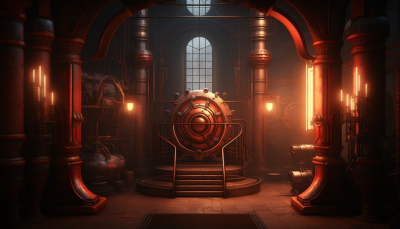
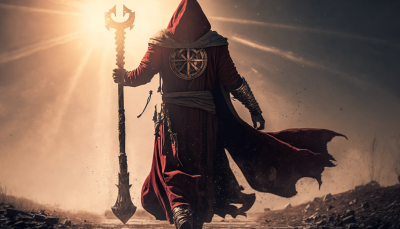
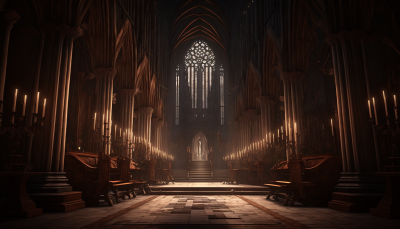
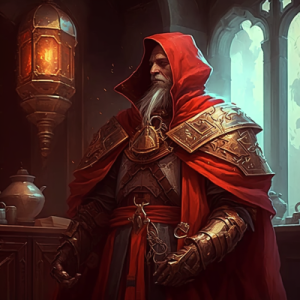
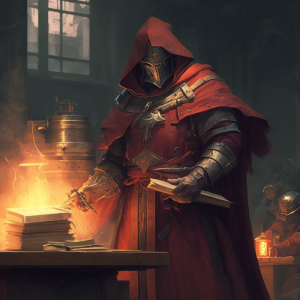
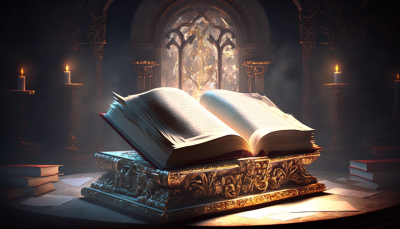
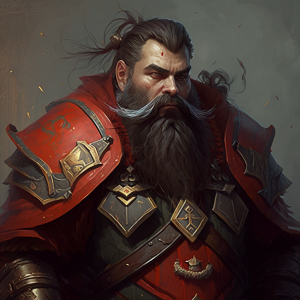

Comments